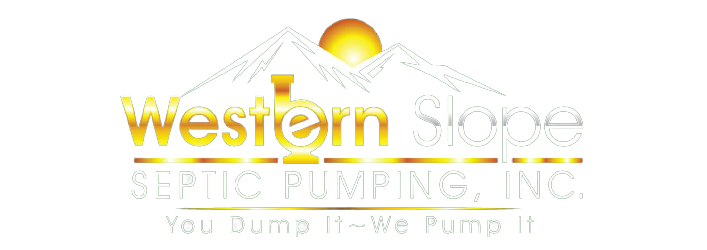
Preventive Maintenance
Be Kind to Your Septic System
You should institute measures to maintain optimum functioning of your septic system and thereby reduce the risk of septic system failure. Some measures are obvious, others not so. Although certain recommended measures may, understandably, not be consistent with your preferred lifestyle, we shall at least bring them to your attention.
Septic Tank Size
Your septic tank should be large enough to accommodate your household members and the amount of wastewater they generate.
Use Water Efficiently
Excessive water use may result in insufficient time for your septic tank to process wastewater, thereby compromising your system’s operation and increasing the risk of failure.
Toilets
- Toilets account for a significant proportion of household water use. If you have old toilets, they may use 3.5 to 5 gallons per flush. Newer, high efficiency toilets use 1.6 gallons per flush.
- Be sure the toilet tank is not leaking water into the bowl.
Faucets
- Faucet aerators reduce water use.
- Be sure faucets are turned off when not in use.
- Fix a leaking faucet.
- Turning off faucets while shaving or brushing teeth conserves water.
Showers
- High efficiency shower heads or shower flow restrictors reduce water use.
- Some people turn off or reduce the flow of water in showers while they lather up.
Bathtubs
- If you use a bathtub, fill it only with the amount of water you need.
Clothes Washers
- Select the appropriate load size if your washing machine has that option. Otherwise, run your clothes washer only when it is full.
- If you run several washes per week, it is best to space them out rather than running one load immediately after another, in order not to introduce too much wastewater, too quickly, into your septic tank. Give your septic tank enough time to process wastewater before expelling the effluent.
- Consider replacing an old clothes washer with a new, high-efficiency model. Energy Star clothes washers use 35 to 50 percent less energy and 50 percent less water than standard models.
Dishwashers
- Run dishwashers only when they are full.
- Consider replacing an old dishwasher with a new, high-efficiency model.
Waste Disposal
Toilets
- Do not flush down items that can clog or damage your system if they become trapped. Such items include dental floss, feminine hygiene products, condoms, diapers, baby wipes, cotton swabs, cigarette butts, coffee grounds, cat litter, paper towels, and other bathroom and kitchen items.
Garbage Disposals
- Garbage disposals are a modern convenience, but the many small bits of garbage add to the accumulation of sludge and scum in septic systems. If you have a good alternative available, consider reducing the amount of garbage that goes down the kitchen sink drain.
Scum Layer
- If the build-up of the scum layer in your septic tank tends to be excessive, then consider reducing the quantity of substances that contribute to that layer, particularly fats, oils, and grease.
Contaminants
- Your septic tank functions by using natural processes: namely, microbes (bacteria) that digest organic solids. Avoid discarding substances down drains if they may damage this microbial system or contaminate groundwater or surface waters.
- Substances to avoid include household chemicals, solvents, gasoline, oil, pesticides, antifreeze, and paints (especially oil paints).
- Your local health department probably has periodic drop-offs for you to dispose of toxic substances.
Clogged Drains
- Avoid caustic drain openers. Alternatives include:
- Boiling water can sometimes clear a clogged drain.
- Pressure to remove a clog that partially blocks a drain can be generated by covering the drain with a drain stopper, filling the sink with hot water, and then removing the stopper. The downward pressure of several gallons of hot water may be sufficient to clear the blockage.
- Sink pumps are inexpensive tools that come in handy when drains get clogged.
- A drain snake can be used to clear a clogged drain, although a professional service may be needed if the clog is a considerable distance from the sink’s drain.
Take Care of Your Drainfield
- Plant only grass over and near your septic system. Avoid trees and shrubs since their roots might cause damage.
- Don’t drive or park vehicles on any part of the septic system. Doing so may compact the soil in your drainfield or damage pipes, the tank, or other septic system components.
- Do not allow the drainfield to become flooded with excessive water. Keep roof drains, basement sump pump drains, and other surface water drainage systems away from drainfields.
- Do not drain hot tubs into your septic system or drainfield.
Septic Tank Pumping
Your septic tank gradually accumulates scum on the top and sludge on the bottom. If this accumulation goes unchecked, your septic tank will become less and less effective; and eventually the sewage may back up into your house while also damaging your drainfield.
To prevent a septic system failure, it is very important to periodically have your septic tank pumped. Typically, the tank needs this service every three to five years. The timing depends on many factors, including the size of your tank, the number of people living in the house, and the efficacy of the preventive maintenance measures instituted in your daily life.
BROWSE OUR WEBSITE
CONTACT INFORMATION
Phone: 530-556-9898
Email: office@wsspi.com
Address: 100 Shultz Vineyard Road, Shingle Springs, CA 95682
Certified Septic Inspectors
Serving: El Dorado & Amador Counties
BUSINESS HOURS
- Mon - Fri
- -
- Sat - Sun
- Closed
and by appointment
